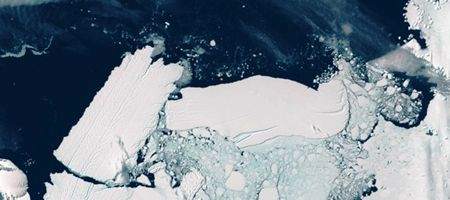As atmospheric carbon dioxide increases, the planet won’t get as hot as previous studies have indicated, new research shows.

The authors of the National Science Foundation-funded study say there’s no doubt that global warming is real, and that increases in atmospheric CO2 will have multiple serious impacts.
However, their data suggests that a doubling of CO2 wouldn’t increase the rate of global warming by as much as the worst estimates of some previous studies – or even than projected by the Intergovernmental Panel on Climate Change report in 2007.
“Many previous climate sensitivity studies have looked at the past only from 1850 through today, and not fully integrated paleoclimate date, especially on a global scale,” says Andreas Schmittner, an Oregon State University researcher.
“When you reconstruct sea and land surface temperatures from the peak of the last Ice Age 21,000 years ago – which is referred to as the Last Glacial Maximum – and compare it with climate model simulations of that period, you get a much different picture.”
The 2007 IPCC report estimated that the air near the surface of the Earth would warm on average by 2 to 4.5 degrees Celsius with a doubling of atmospheric CO2 from pre-industrial standards. The mean, or ‘expected value’ increase was 3.0 degrees.
Some previous studies have claimed the impacts could be much more severe. However, those based on data going back only to 1850 are affected by large uncertainties in the effects of dust and other small particles in the air that reflect sunlight and can influence clouds, or by the absorption of heat by the oceans.
To lower the degree of uncertainty, Schmittner and his colleagues used a climate model with more data and found that there are constraints that preclude very high levels of climate sensitivity.
They compiled land and ocean surface temperature reconstructions from the Last Glacial Maximum and created a global map of those temperatures. During this time, atmospheric CO2 was about a third less than before the Industrial Revolution, and levels of methane and nitrous oxide were much lower.
Because much of the northern latitudes were covered in ice and snow, sea levels were lower, the climate was drier (less precipitation), and there was more dust in the air.
The new simulations include these factors, and change the assessment of climate models in many ways, says Schmittner.
High sensitivity climate models – more than 6 degrees – suggest that the low levels of atmospheric CO2 during the Last Glacial Maximum would result in a ‘runaway effect’ that would have left the Earth completely ice-covered.
“Clearly, that didn’t happen,” Schmittner said. “Though the Earth then was covered by much more ice and snow than it is today, the ice sheets didn’t extend beyond latitudes of about 40 degrees, and the tropics and subtropics were largely ice-free – except at high altitudes. These high-sensitivity models overestimate cooling.”
On the other hand, models with low climate sensitivity – less than 1.3 degrees – underestimate the cooling almost everywhere at the Last Glacial Maximum, the researchers say. The closest match, with a much lower degree of uncertainty than most other studies, suggests climate sensitivity is about 2.4 degrees.
Schmittner says that continued unabated fossil fuel use could lead to similar warming of the sea surface as reconstruction shows happened between the Last Glacial Maximum and today.
“Hence, drastic changes over land can be expected,” he says. “However, our study implies that we still have time to prevent that from happening, if we make a concerted effort to change course soon.”






